| Cryptoclidia Temporal range: Middle Jurassic-Late Cretaceous, | |
|---|---|
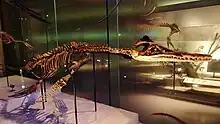 | |
| Skeleton of Thililua longicollis, National Museum of Nature and Science | |
| Scientific classification | |
| Domain: | Eukaryota |
| Kingdom: | Animalia |
| Phylum: | Chordata |
| Class: | Reptilia |
| Superorder: | †Sauropterygia |
| Order: | †Plesiosauria |
| Superfamily: | †Plesiosauroidea |
| Clade: | †Cryptoclidia Ketchum and Benson, 2010 |
| Subgroups | |
| |
Cryptoclidia is a clade of plesiosaurs.
Cryptoclidia was named and defined as a node clade in 2010 by Hilary Ketchum and Roger Benson: the group consisting of the last common ancestor of Cryptoclidus eurymerus and Polycotylus latipinnis; and all its descendants.[1]
The following cladogram follows an analysis by Benson & Druckenmiller (2014).[2]
| Plesiosauroidea |
| ||||||||||||||||||||||||||||||||||||||||||
References
- ↑ Ketchum, H.F.; Benson, R.B.J. (2010). "Global interrelationships of Plesiosauria (Reptilia, Sauropterygia) and the pivotal role of taxon sampling in determining the outcome of phylogenetic analyses". Biological Reviews. 85 (2): 361–392. doi:10.1111/j.1469-185X.2009.00107.x. PMID 20002391. S2CID 12193439.
- ↑ Benson, R. B. J.; Druckenmiller, P. S. (2013). "Faunal turnover of marine tetrapods during the Jurassic-Cretaceous transition". Biological Reviews. 89 (1): 1–23. doi:10.1111/brv.12038. PMID 23581455. S2CID 19710180.
This article is issued from Wikipedia. The text is licensed under Creative Commons - Attribution - Sharealike. Additional terms may apply for the media files.
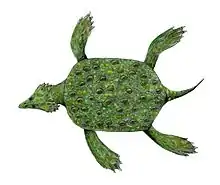
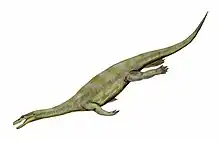
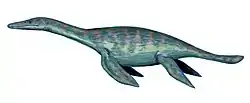

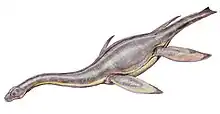
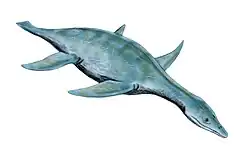
.png.webp)